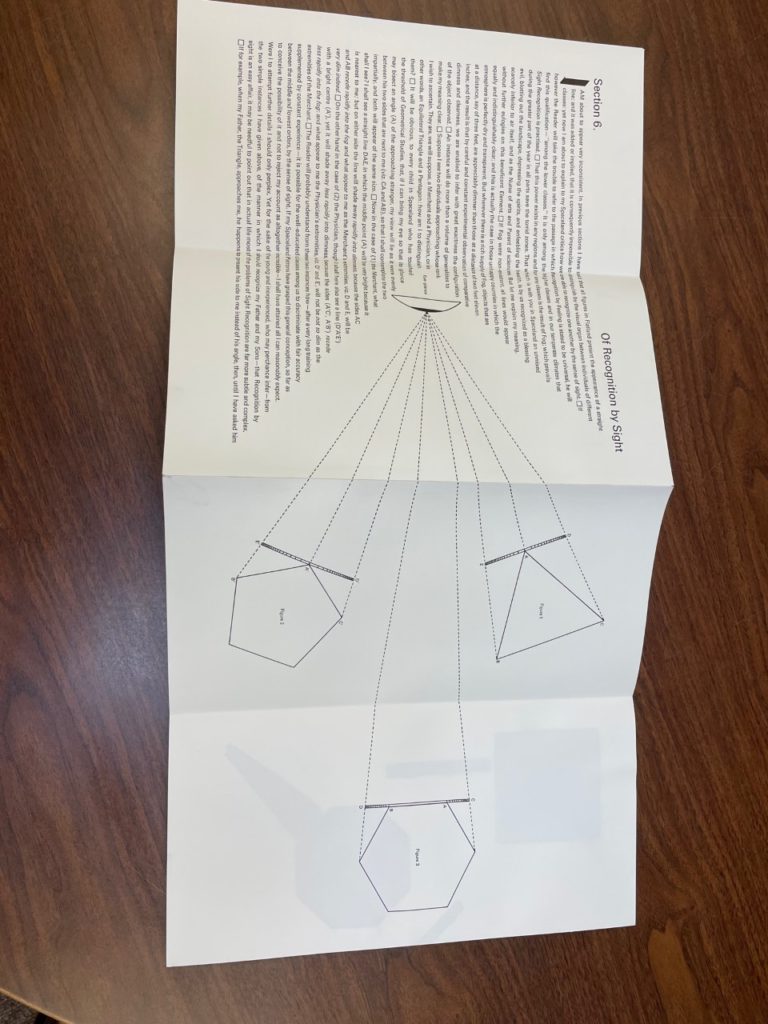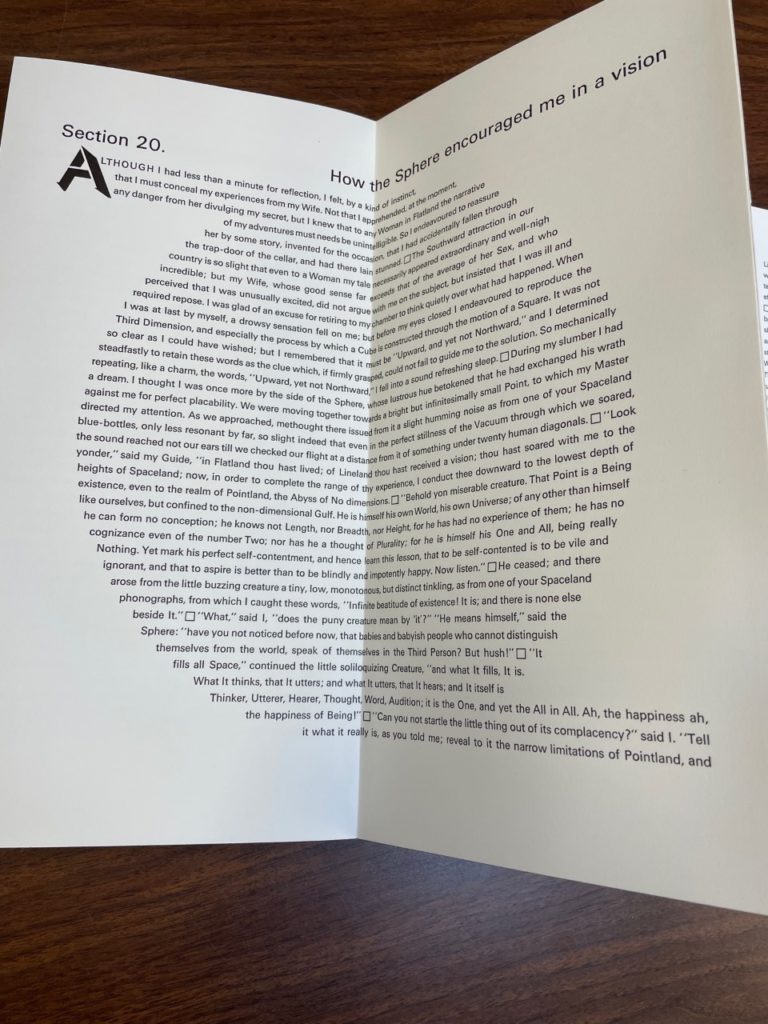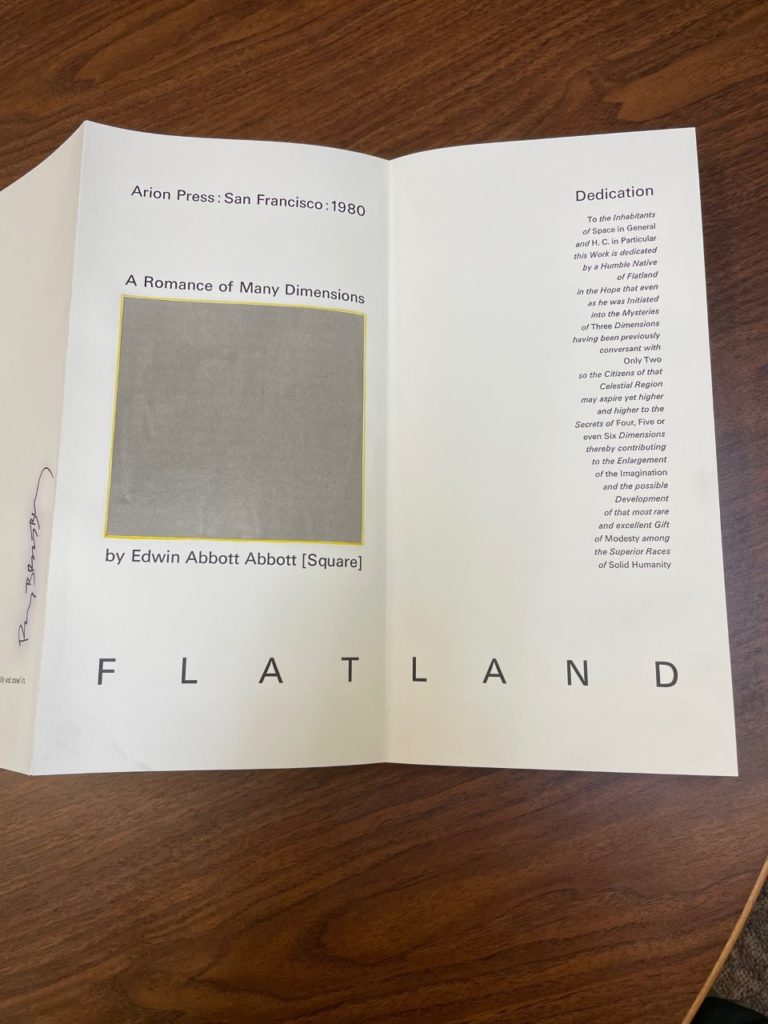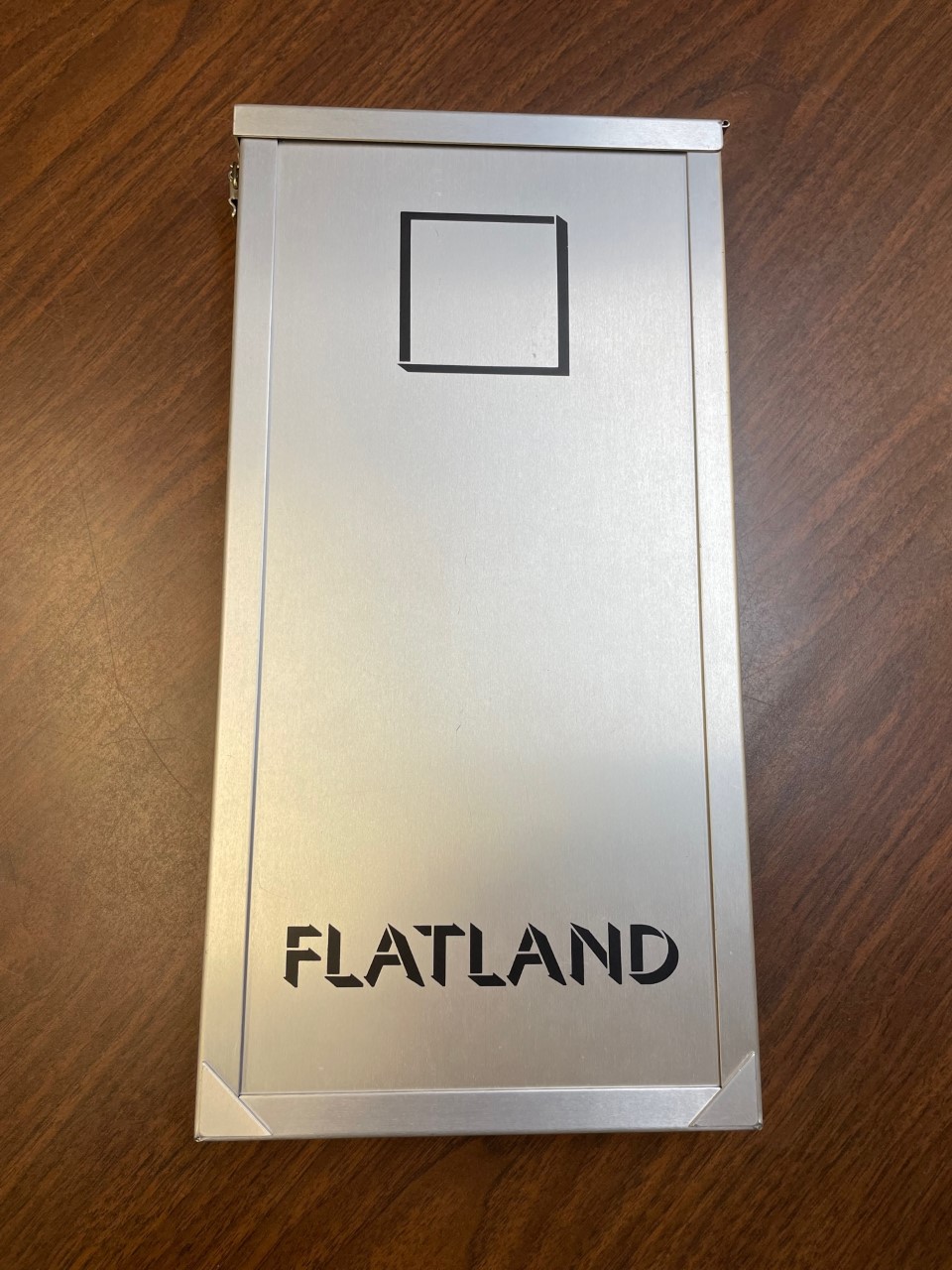The following was written by Marie Ernster, practicum student from School of Library and Information Science
The field of mathematics was in a period of philosophical volatility in England in the 19th century. A huge debate raged in the area of geometry over whether they should allow non-Euclidean concepts to enter the pedagogy. Among the traditionalists, geometry represented a means of providing consistent models that would bring certainty to the universe. Non-Euclidean geometry threatened this certainty because it went against the established metrics of empiricism in mathematics. In exploring extra dimensionality through mathematics, this new paradigm would change the very foundation of how geometry could be used as a piece of evidence in the consistency of the universe.
In 1883 President of the British Association for the Advancement of Science, Arthur Cayley, addressed these
concerns by pointing out that mathematics was pushing beyond its established boundaries, and his fellow mathematicians should proceed cautiously with their exploration in this new field. He understood that mathematicians would use geometry to explore beyond three dimensions, so he asked that they not leave their more traditional peers behind. One year later, under the pseudonym of “A Square,” Edwin Abbott Abbott (yes, two Abbotts) decided to take a different path from Cayley and explain non-Euclidean geometry in the ground-breaking work Flatland.
Abbott himself was an avid writer at this point in his life, while still working as headmaster for the City School of London until his retirement in 1889. He usually published English guides, such as How to Write Clearly and English Lessons for English People, as well as theological writings like Silanus the Christian and Philochristus. As headmaster, he made elementary knowledge of chemistry compulsory because he believed that students should have a reverence for science. Abbott understood that some of the fears of English mathematicians came from how the association between certainty and geometry made their very faith in Universal Truths shakable as well. After all, if the unassailable reality of geometry could be so affected, then what else could prove the certainty of their own lives? Well, Edwin Abbott Abbott took the proverbial hands of these people, and showed them how to maintain certainty despite these fears.
In the world of Flatland: a romance of many dimensions, A Square describes a world that exists on an infinite plane; essentially, he lives on a huge piece of paper. A Square describes the basic mechanics of living in such a land: how they can see and navigate, how they know what shapes are and how to differentiate them, how the social structures based on sidedness works, and so on and so forth. But then, A Square meets a circle (the shape considered most important because of its near incalculable sidedness) unlike any circle he had ever met before because this circle was actually a sphere capable, to the eyes of the square, of reducing itself to a small point and then to complete invisibility. A Square eventually learns from the sphere that there are more dimensions than the two he uses to navigate his plane of existence. The gospel of the third dimension is radical to A Square, and near incomprehensible when he exists in his own plane because he has no vocabulary to adequately describe the concept of the third dimension. To make things even more difficult, the priestly circles who govern his world declare that any teaching of the third dimension would lead to imprisonment, or even death. As it goes, A Square ends his story imprisoned for the rest of his life for speaking about the third dimension because he couldn’t contain his excitement about this new paradigm of existence.
Considering the infighting amongst mathematicians at the time, it seems more calculated than cute of Abbott to publish this story under a pseudonym. After all, he uses Flatland to conceptualize the fourth dimension and more beyond that. But he wasn’t just critiquing the traditionalist dogma of mathematics; Abbott was attempting to show that non-Euclidean geometry was the next natural step in the evolution of mathematics—a means to find deeper, more certain truths about the universe than what Euclidean geometry could hope to achieve.
Beyond that, Abbott used Flatland to critique English culture at the time, especially the rigid social dogmas that restricted creative thought and expression. In the second edition of his story, Abbott added a preface under a new pseudonym (called the “Editor”) where he explained that women need greater consideration in wider culture. He uses the treatment of women in Flatland to demonstrate that the rigid social and educational control over women in England prevents them from contributing intellectually to the cultural discourse. The women of Flatland are vapid fools because this is the only option given to them.
Jumping almost a hundred years later, the 1980 Arion Press edition of Flatland found in the Sackner Archive provides an interesting tangibility to Flatland and its inhabitants. Printed on a single, accordion folded sheet of paper, this edition of Flatland provides unique type formatting and crisp illustrations to the story. It can be rather daunting to read a short story that comes with handling instructions, but that makes this copy all the more fascinating. The introduction in this edition is by Ray Bradbury, who presents a wholly literary perspective on the piece and its merits. Bradbury explains Abbott’s creation of Flatland as a process of building strange and silly ideas on top of each other, one after another. Abbott takes the serious and straightforward concept of mathematical geometry and turns it into a silly allegorical story about circles oppressing the creative intellectual growth of other shapes under their purview. Bradbury’s final note is that this book “won’t necessarily prevent us from being fools, but it may help us not to be absolute fools.” Flatland is a story about our own world and imperfect perspectives, presented through the whimsical lens of polygons and lines and points.
137 years later and Flatland still remains an interesting touchstone of debate and discussion about the mathematical concepts, feminist interpretations, and even genre definitions it encompasses. Even conventional genre labels cannot encompass the themes and ideas of a story about A Square living in a world of shapes. People debate whether it could technically be called science fiction when there isn’t anything all that scientific about it, or maybe literary culture as a whole should break down and call it “mathematical fiction,” even though such a label might only really exist for this story and the few pieces inspired by it.
Considering he never wrote another piece like it ever again, it seems as though Abbott expected his other works to become his greater legacy, or maybe he thought there could be no more to say about Flatland besides some minor corrections or clarifications from edition to edition. In fact, it is one of the shortest pieces he ever published. But the reality is Flatland: a romance of many dimensions became his most famous and enduring work because it presents a fantastical world so different and so similar to our own, with ideas that spark questions and debate to this day about intention and culture, that there could only ever be one
Flatland.



Special Note:
The Ruth and Marvin Sackner Archive of Concrete and Visual poetry has a treasure trove of materials yet to be uncovered as parts of it awaits processing in Special Collections & Archives. The Arion Press edition in the Sackner Collection has not yet been processed, but it will soon be accessible from the Special Collections & Archives website.
Bibliography
Gilbert, Elliot L. “’Upward, Not Northward’: Flatland and the Quest for the New.” English Literature in Transition, 1880-1920, vol. 34, no. 4, Arizona State University, Department of English, 1991, pp. 391–404.
School of Mathematics and Statistics. “Edwin Abbott Abbott – Biography.” Maths History, University of St. Andrews, Feb. 2005, https://mathshistory.st-andrews.ac.uk/Biographies/Abbott/.
Valente, K. G. “Transgression and Transcendence: Flatland as a Response to “A New Philosophy”.” Nineteenth-Century Contexts, vol. 26, no. 1, Taylor and Francis Ltd, 2004, pp. 61–77, doi:10.1080/08905490410001683309.
Different Editions of Flatland at Special Collections & Archives:
Flatland by Edwin Abbot Abbott, Introduction by Ray Bradbury, Printer’s Note by Andrew Hoyem, 18th American Edition, 1980
The Annotated Flatland: A Romance of Many Dimensions by Edwin Abbott Abbott, Introduction and Notes by Ian Stewart, 2008
Flatland: a romance of many dimensions by Derek Beaulieu, Afterword by Marjorie Perloff, 2007


